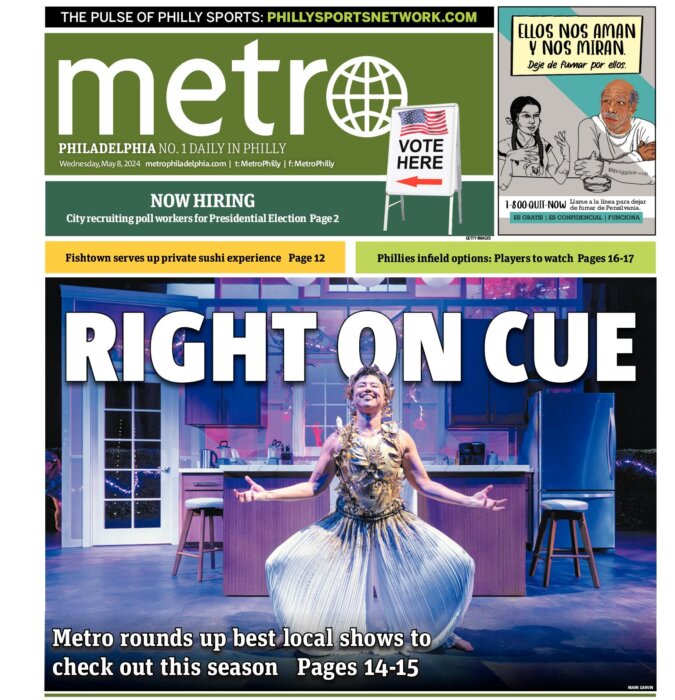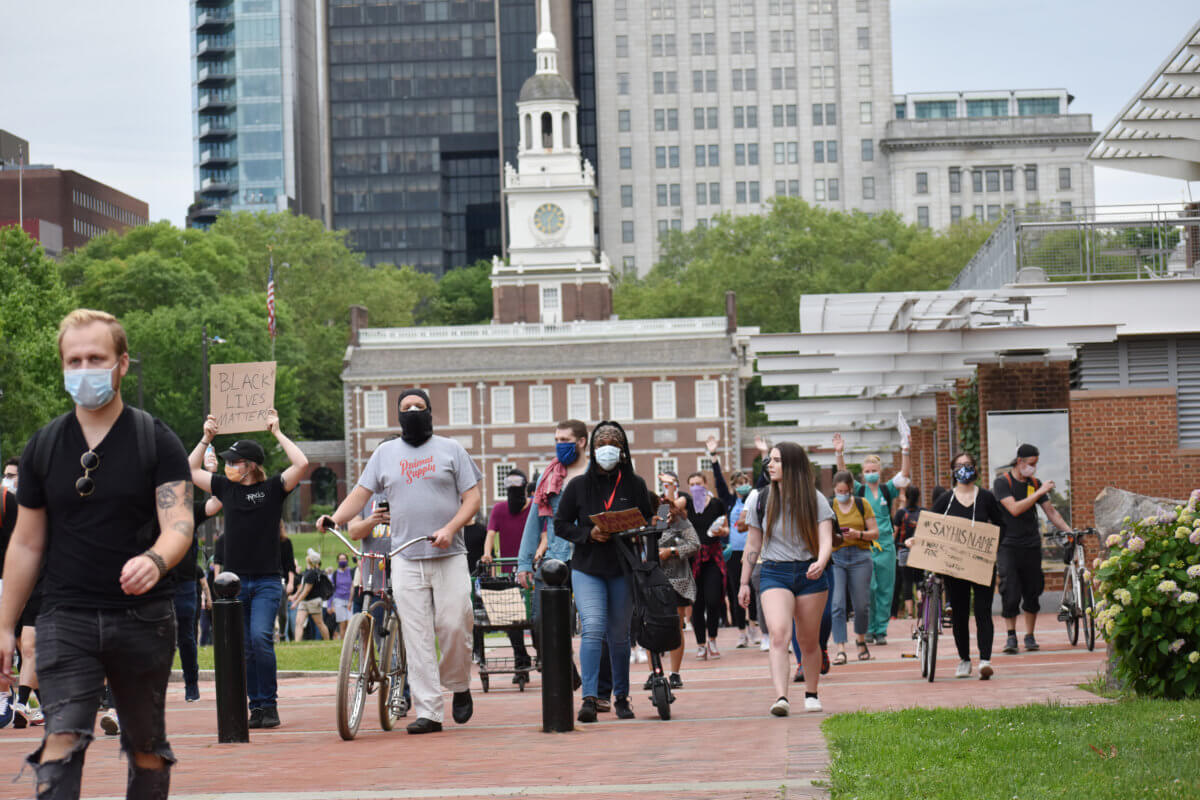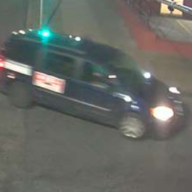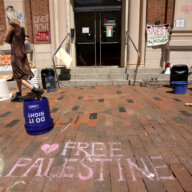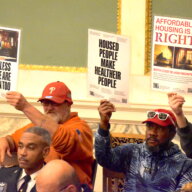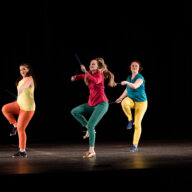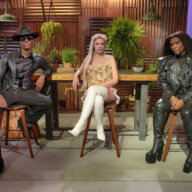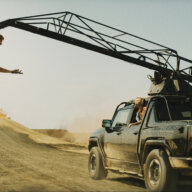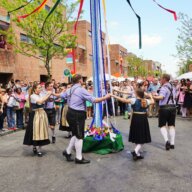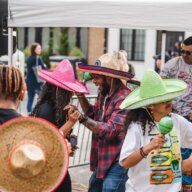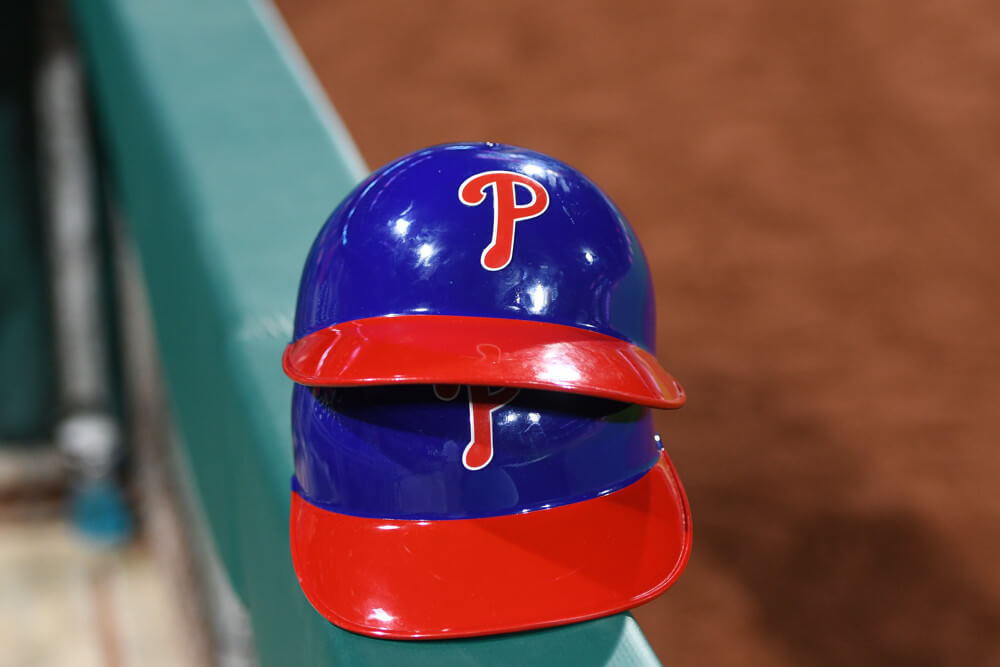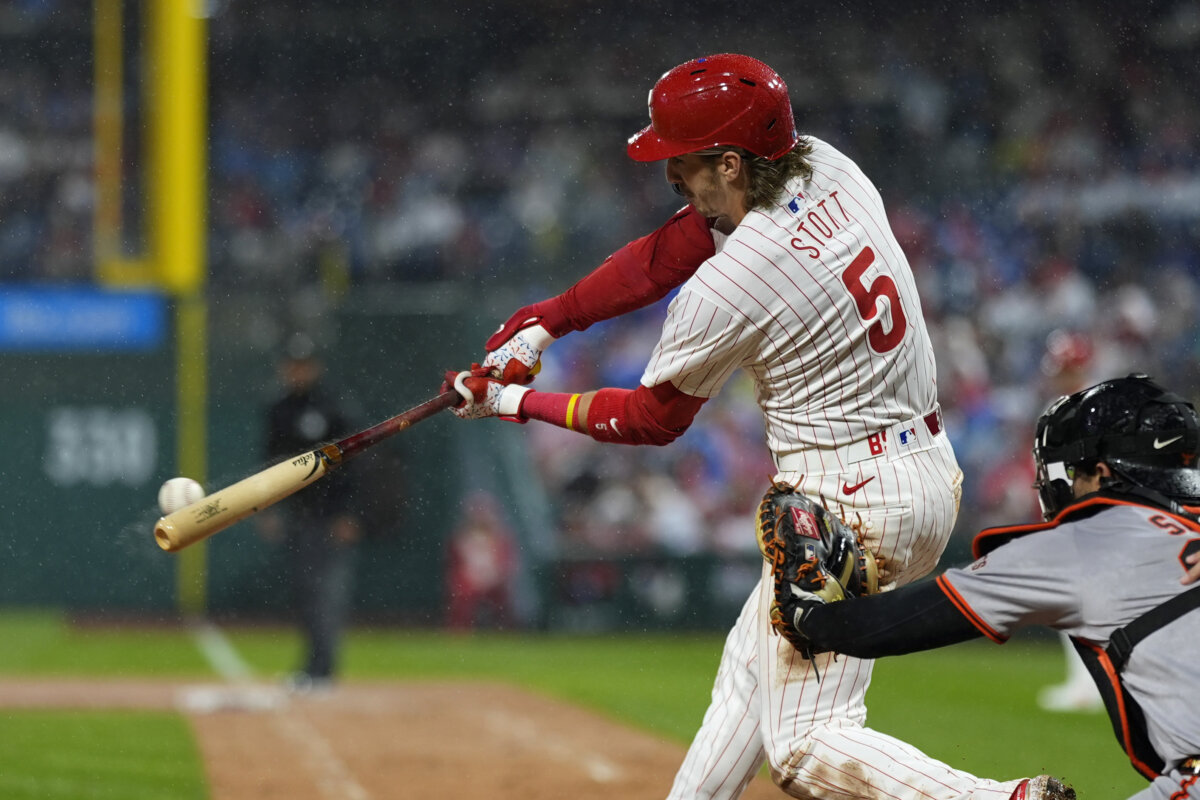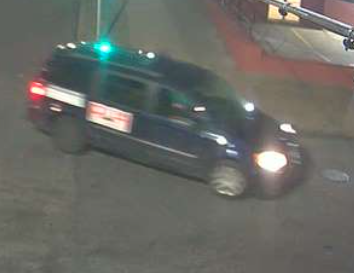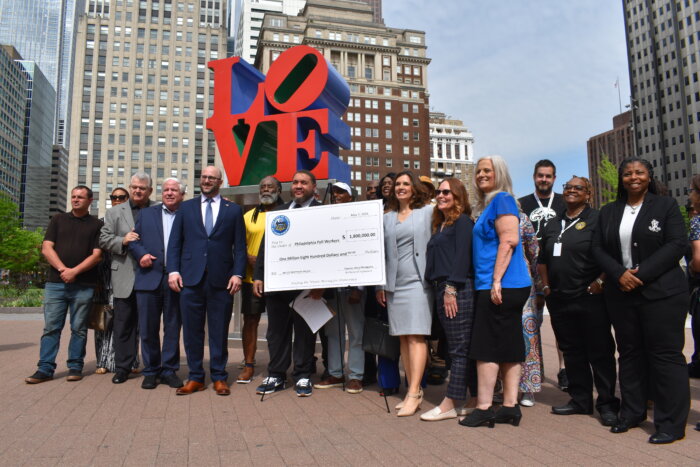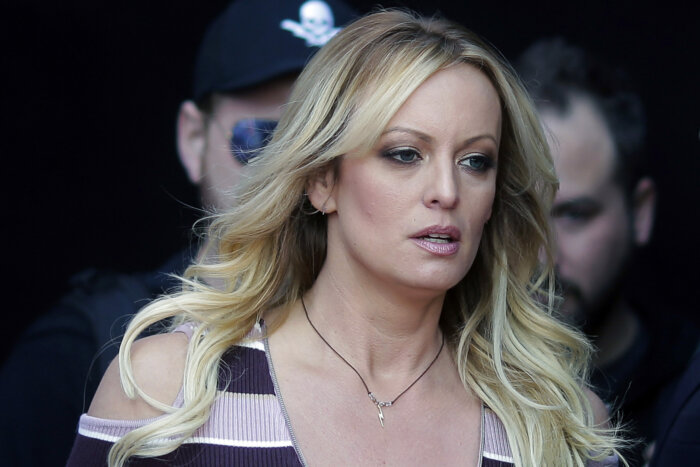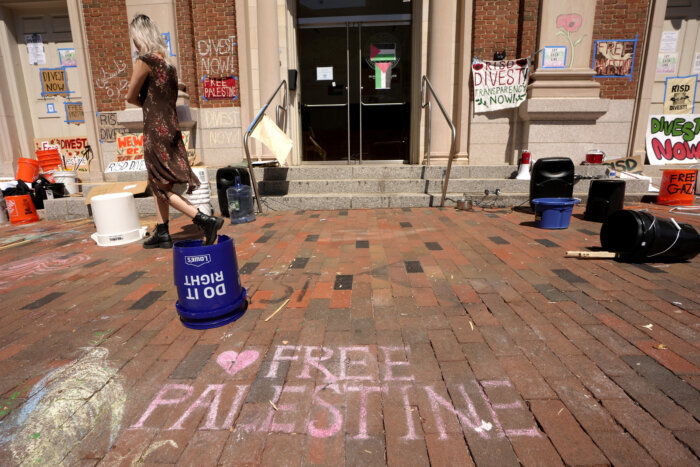A statue Philadelphia Mayor Jim Kenney called a “monument to racism, bigotry, and police brutality” came down early Wednesday morning, days after it became a target of protesters.
The bronze sculpture of former mayor Frank Rizzo was installed in 1999 in front of the Municipal Services Building, and it has long been controversial, especially for black Philadelphians.
“For too many Philadelphians of color, the Rizzo era was marred by inequality and incidents of police brutality,” City Council President Darrell Clarke said in a statement.
Kenney admitted that the city’s plan to wait until the upcoming renovation of Thomas Paine Plaza, an effort to save money, overlooked the feelings of many residents who wanted Rizzo removed.
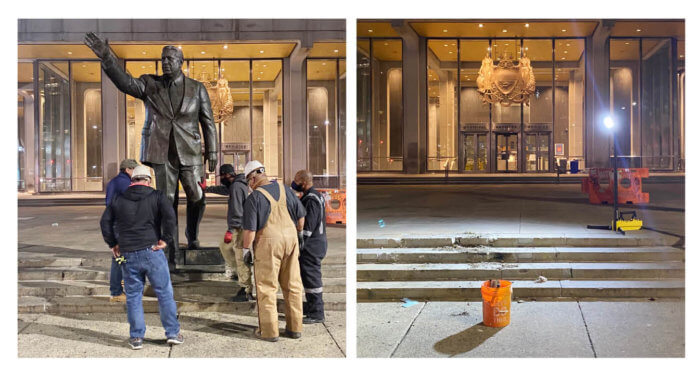
“Now I believe we can start again to begin the sensitive and nuanced process of healing our communities,” the mayor said Wednesday.
Rizzo served as the city’s police commissioner from 1967 to 1971 before being elected mayor, a position he stayed in until 1980. He died in 1991.
Officials said the sculpture was moved to a secure location for storage until a plan is in place to donate, relocate or dispose of it.
“If somebody has a plan, we’re willing to listen,” Kenney told reporters.
The statue was ripped out of the ground as the city entered another day of curfew and ongoing demonstrations following the death of George Floyd, a black man who was killed by police in Minneapolis.
It came after a day of almost, if not entirely, peaceful gatherings.
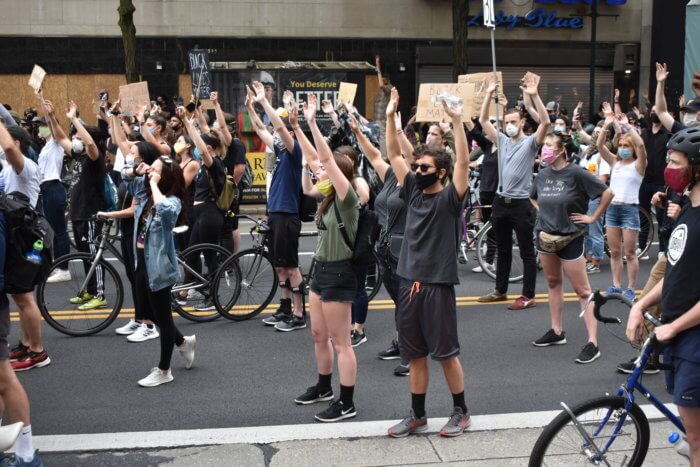
Tuesday night saw separate marches winding throughout the city, including a group of thousands that chanted, among other things, “hands up, don’t shoot” and “no good cops in a racist system” as they walked from Center City to Old City.
A smaller group gathered at 15th Street and John F. Kennedy Boulevard Wednesday afternoon, kneeling in front of a barricade blocking the street, behind which U.S. National Guard vehicles are arranged.
LESS LOOTING
Police Commissioner Danielle Outlaw said illegal activities were down Tuesday night compared to earlier in the week.
“The looting and the vandalism is beginning to slow down,” she said, crediting the strategic deployment of officers. “I don’t want to claim victory before everything is over, but we are seeing that these looting teams have been effective.”
Authorities reported 716 total arrests since Saturday, a jump of only about 25 compared with figures released Tuesday afternoon.
Kenney said residents may begin to see the National Guard fanning out from Center City into neighborhoods to guard businesses and commercial corridors.
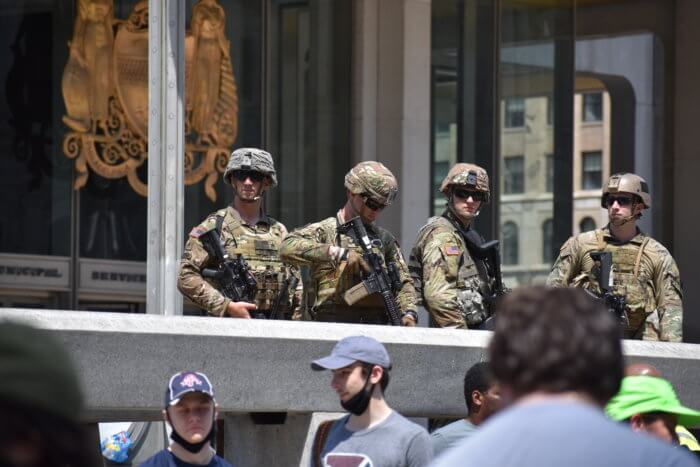
He added that officials don’t know when the force will be sent home.
Outlaw confirmed the release of a memo, first reported by WHYY, to officers instructing them to report all use of force over police radio.
She also said tear gas, pepper spray and other such measures could only be used with her approval.
No officers have been disciplined yet related to the department’s response to the demonstrations, but Outlaw said the Internal Affairs Division is investigating several incidents.
A DANGEROUS TREND
Pops and loud noises heard by Philadelphians at night recently could be due to a wave of people attempting to use explosives to blow up ATMs, authorities said Tuesday.
Officers have responded to 135 explosions since Saturday, including 50 cases where ATMs were damaged, Outlaw said. Most of the incidents have involved M-100 or M-250 explosives, which are illegal.
“Most of these ATMs don’t have money in them, and we encourage businesses that do have these private ATMs outside of their businesses or inside to ensure that the money is removed,” Outlaw said.
A 24-year-old man died Tuesday morning after he allegedly tried to blow up an ATM in North Philadelphia.
The Bureau of Alcohol, Tobacco, Firearms and Explosives, a federal agency, has been helping to investigate the trend.
